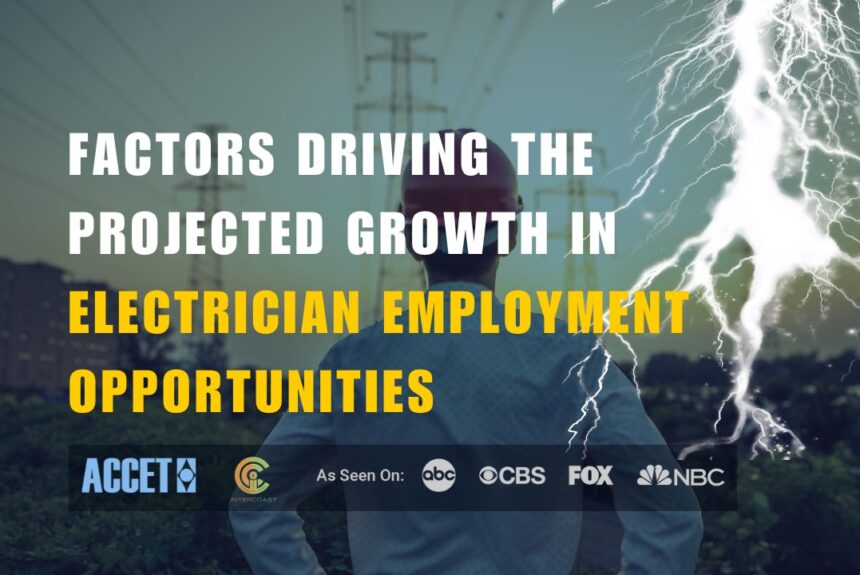The electrical industry is undergoing significant transformation, leading to a potential increase in employment opportunities for people entering the electrical industry. Technological advancements, infrastructure development, and renewable energy initiatives influence this growth. Understanding these factors offers insight into the evolving demands for skilled electricians and highlights their important role in modern economies.
Technological Advancements
Technological innovation has expanded the scope and complexity of electrical work, creating new opportunities for electricians.
1. Smart Homes and the Internet of Things (IoT)
The rise of smart homes equipped with IoT devices may increase the demand for electricians skilled in installing and maintaining complex networks of connected systems. According to a report by Statista, the global smart home market could reach $207.8 billion by 2027, growing at a CAGR of 16.9% from 2020 to 2027[^1^]. Electricians will likely play a role in integrating smart appliances, lighting, security systems, and energy management solutions to ensure seamless operation and energy efficiency.
2. Automation in Commercial and Industrial Settings
Businesses are increasingly adopting advanced automation and building management systems. These systems control lighting, HVAC, security, and other essential functions. Electricians may play a critical role in installing and maintaining these technologies, which enhance operational efficiency and require specialized electrical expertise.
3. Emerging Technologies
The advent of technologies such as artificial intelligence, 5G networks, and advanced robotics requires sophisticated electrical infrastructure. Electricians with expertise in these areas will likely support installing and maintaining new technological systems in various sectors, including manufacturing and telecommunications.
Infrastructure Development
Continued infrastructure development is a significant driver of potential employment growth for electricians.
1. Construction Boom
Ongoing residential, commercial, and industrial construction projects require extensive electrical work. The U.S. Census Bureau reported that construction spending reached $1.57 trillion in August 2021, indicating robust growth in the sector[2]. Urbanization and population growth may fuel the demand for new housing, office spaces, and manufacturing facilities, all requiring electrical installations.
2. Aging Infrastructure
Much of the existing electrical infrastructure in developed countries is outdated and requires upgrading or replacement. The American Society of Civil Engineers (ASCE) gave the U.S. energy infrastructure a grade of C- in its 2021 Report Card, highlighting the need for significant investment[^3^]. Electricians may be needed to overhaul electrical grids, update wiring systems in older buildings, and improve public utilities to meet modern standards.
3. Government Investments
Public sector investments in infrastructure projects, such as transportation networks, hospitals, and schools, involve substantial electrical components. The Infrastructure Investment and Jobs Act passed in November 2021 allocates $1.2 trillion toward infrastructure improvements, potentially creating sustained demand for electricians over the coming years[^4^].
Renewable Energy Initiatives
The global shift toward renewable energy sources may significantly impact the employment landscape for electricians.
1. Solar and Wind Energy
Installing solar panels and wind turbines requires electricians specializing in renewable energy systems. The International Renewable Energy Agency (IRENA) reported that renewable energy could account for 90% of new power capacity expansion globally by 2025[^5^]. As governments and businesses invest in clean energy to meet environmental targets, the demand for installation and maintenance services could grow.
2. Electric Vehicle (EV) Infrastructure
The increasing popularity of electric vehicles necessitates the expansion of charging infrastructure. The International Energy Agency (IEA) projected that the number of electric cars on the road could reach 145 million by 2030[^6^]. Electricians are expected to play an important role in installing EV charging stations in residential, commercial, and public spaces, supporting this transition.
3. Energy Storage Systems
Advancements in battery technology and energy storage solutions require skilled electricians to install and integrate these systems with existing electrical infrastructure safely. These systems are essential for managing energy generated from renewable sources, ensuring reliability and efficiency.
Additional Factors Influencing Demand
Several other factors contribute to the growing demand for electricians.
1. Aging Workforce
A significant portion of the current electrician workforce is nearing retirement age. According to the National Electrical Contractors Association (NECA), the industry may face a shortage of skilled workers, opening up positions that need to be filled by new electricians[^7^]. This demographic shift could create opportunities for employment and career advancement.
2. Regulatory Changes
Updates to electrical codes and safety regulations often require buildings to upgrade their electrical systems. Compliance with these regulations may necessitate professional electrical services, potentially increasing demand for qualified electricians.
3. Energy Efficiency Retrofits
There is a growing emphasis on energy conservation and efficiency. Retrofitting buildings with energy-efficient lighting, appliances, and control systems requires electrical expertise. Programs incentivizing energy efficiency upgrades could contribute to the demand for electricians.
Conclusion
With the world getting more tech-savvy and eco-friendly, the demand for skilled electricians is rising. As societies embrace technology and sustainability, the electrical industry needs electricians who can handle the new challenges. So, if you’re looking for a rewarding career that’s in high demand, becoming an electrician might be the perfect fit for you!
References
[^1^]: Statista. (2021). Smart Home – Worldwide. Retrieved from https://www.statista.com/outlook/dmo/smart-home/worldwide
[^2^]: U.S. Census Bureau. (2021). Construction Spending. Retrieved from https://www.census.gov/construction/c30/historical_data.html
[^3^]: American Society of Civil Engineers. (2021). 2021 Report Card for America’s Infrastructure. Retrieved from https://infrastructurereportcard.org/
[^4^]: The White House. (2021). Fact Sheet: The Bipartisan Infrastructure Deal. Retrieved from https://www.whitehouse.gov/briefing-room/statements-releases/2021/11/06/fact-sheet-the-bipartisan-infrastructure-deal/
[^5^]: International Renewable Energy Agency. (2020). Renewable Capacity Highlights. Retrieved from https://www.irena.org/publications/2020/Mar/Renewable-Capacity-Statistics-2020
[^6^]: International Energy Agency. (2021). Global EV Outlook 2021. Retrieved from https://www.iea.org/reports/global-ev-outlook-2021
[^7^]: National Electrical Contractors Association. (2020). The Skilled Labor Shortage in the Electrical Industry. Retrieved from https://www.necanet.org/

